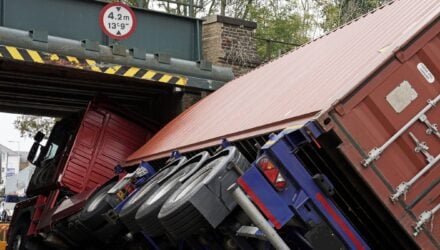
ROAD SAFETY and breakdown cover specialist GEM Motoring Assist is encouraging family members to be wise to the early signs of unsafe driving in their senior relatives.
There are more than four million drivers aged over 70 in the UK. Many are still driving in their 90s, and more than 500 centenarians still hold licences.
GEM road safety officer Neil Worth comments: “We want as many people as possible to enjoy the freedom of the open road for as long as possible, but only while they are safe.
“Warning signs relating to failing health or reduced ability can develop slowly and gradually in older drivers. This often means they won’t be aware of their changing actions or the growing risks they may pose – to themselves and to others – on journeys.
“The only requirement in law for any driver aged over 70 is to declare every three years that they are fit to drive. In the absence of re-testing and mandatory eyesight checks, it’s vital that family members and friends are willing to keep an eye on their senior relatives – and take appropriate action if anything causes them concern.”
GEM suggests the following signs that suggest a high risk of danger with a requirement for immediate action:
‘Close calls’ – or ‘oops factor’ moments where a crash almost happens
Dents and scrapes on the car as a result of hitting fences, posts or kerbs
Traffic penalty tickets, such as speeding and red traffic light violations
GEM also advises family members and friends to look out for the following common signs that could indicate an increase in the risks posed by a senior driver. Most are minor on their own, but can combine to present a significantly increased risk:
Difficulty seeing traffic lights and road signs
Reduced awareness of drivers coming from the side or the rear
Not reacting to an approaching emergency siren
Slow reaction when required to brake or alter direction suddenly
Confusing the accelerator and brake pedalsErratic decision-makingGetting flustered or angry over minor matters
Difficulty looking over shoulders to check before pulling outMissing familiar exits or turnings
Drifting in and out of lanes on motorways and dual carriagewaysFailing to indicate correctly (or at all)
Failing to cancel an indicator
“If you decide that there is a good reason to be concerned about a senior relative, then try to have an informal, friendly chat. If your relative is unwilling to have that conversation, you could attempt to inform their GP, or if all else fails, you could report them to the DVLA. You can do this anonymously if you wish,” says Neil Worth.
“Safety has to be everyone’s priority, even if you risk upsetting some close to you. The potential consequences of not acting are ultimately much, much worse.”
GEM is committed to helping senior drivers stay as safe as possible for as long as possible. For example, the Still Safe to Drive resource, launched by GEM in 2013, gives a range of practical advice to help senior drivers stay safe. It also tackles the potentially sensitive topic of family conversations concerning senior driver safety.
Another excellent idea from GEM is the highly-regarded ‘Driver Assessment’, an hour-long on-road experience that drivers of all ages and experience levels would find helpful and worthwhile. It’s particularly helpful for senior drivers, as a way of ensuring their driving and hazard perception skills are as good as they need to be. As it is not a test, then any areas for improvement can be discussed in a relaxed, informal and stress-free way.


















